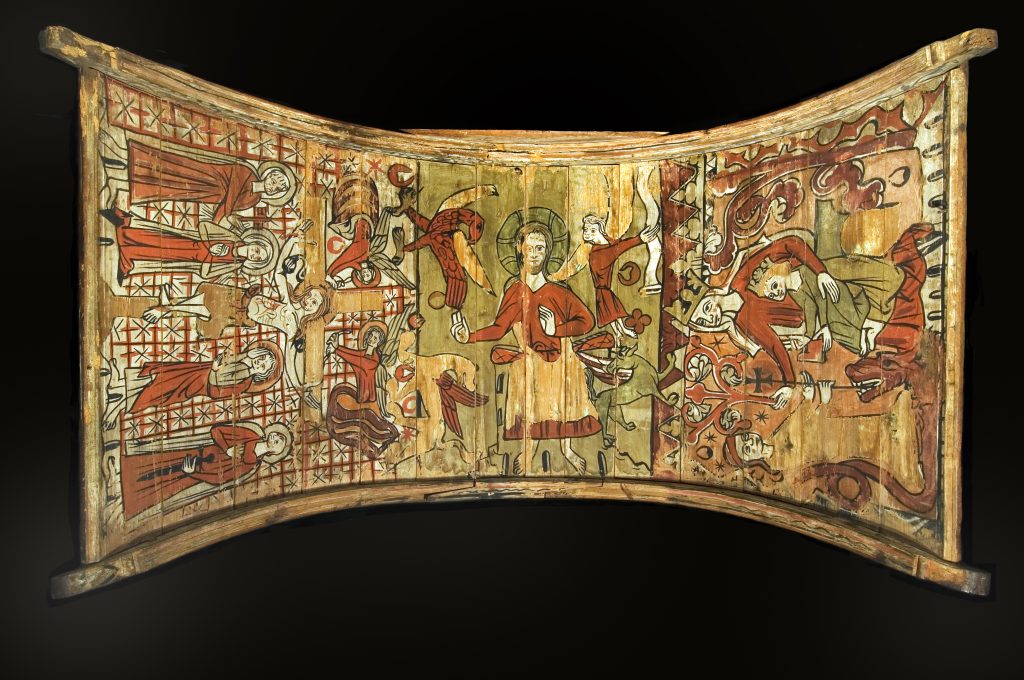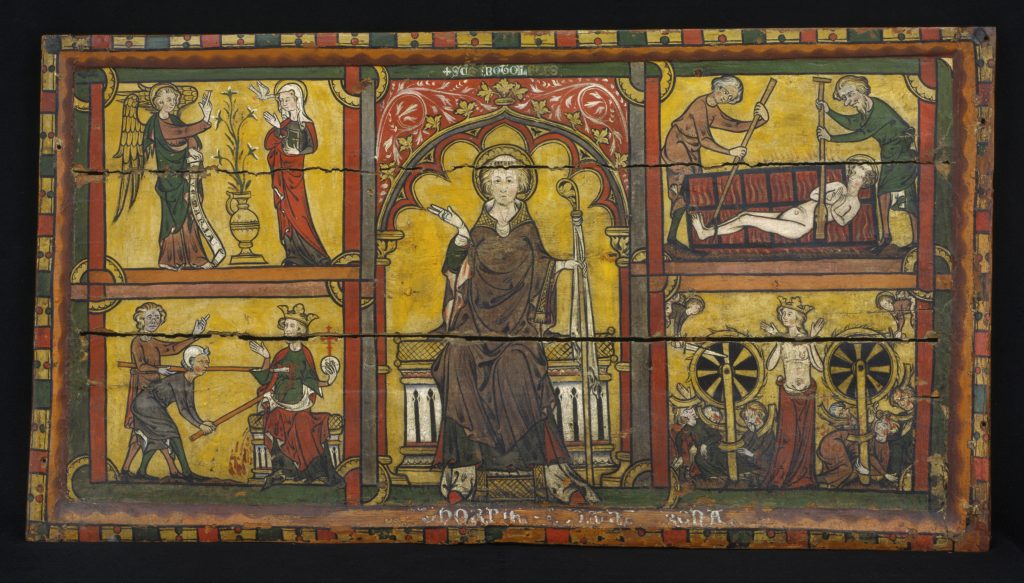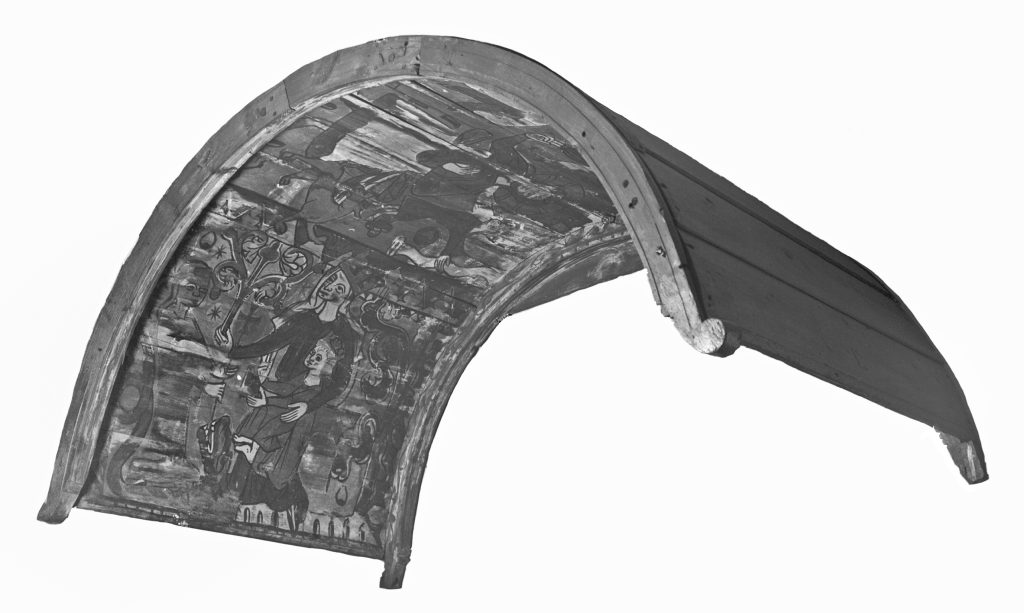The central section of this frontal represents the enthroned Abbot, St Botolph, who is identified by the inscription SCS: BOTOLFUS over the seven-lobed framing arch. His left hand holds a crozier while he makes a blessing gesture with his right. The saint is surrounded by four narrative scenes. The martyrdom of St Olav at the bottom left combines two episodes that usually appear separately: Olav’s death in the Battle at Stiklestad in the year 1030 and the motif of the enthroned King. The section at the top left features the Annunciation, followed by the martyrdom of St Laurence at the top right and that of St Catherine at the bottom right. Under the central section sits a fragmented inscription that can be read as ‘THORBIG […] RONA’. According to Margrethe Stang, this could be the name of the commissioner.

The frontal decorated the medieval high altar in the stave church of Årdal until the church was demolished in 1867 and replaced with a new building. The representation of St Botolph sitting on a throne probably indicates that the church, and hence the high altar, were dedicated to this saint. The selection of the four saints in addition to the Annunciation scene may point at particularly preferred feast days in the liturgical year, but they can also generally be interpreted as depictions of the imitation of Christ.

The painted frontal formed an altar ensemble together with a painted wooden baldachin in the shape of a barrel vault. In the centre, Christ is represented enthroned and surrounded by the symbols of the Four Evangelists. On his left, the Crucifixion scene is depicted with the accompanying figures of the Virgin Mary and St John, flanked by the apostles St Peter and St Paul. On Christ’s right, the Virgin and Child enthroned can be seen, with the Virgin handing over a branch to St Margaret of Antioch, who is vanquishing the dragon.
In the museum’s archives, a letter written on the eve of the demolition of the church states that the barrel vault was situated over the high altar in the chancel and attached to the surrounding staves. Baldachins of wood and stone covering high altars were common throughout Europe, but only few examples are preserved outside of Italy and the Adriatic Coast. Most canopies would have been of stone. The Årdal baldachin, the example in Torpo stave church in the Hallingdal and the side altar baldachin in Hopperstad (Sogn) are the only surviving wooden baldachins in Northern Europe. However, vestiges found in several other stave churches suggest considerable spread.

In terms of function and iconography, the baldachin from Årdal corresponds with the flat wooden baldachins of Spanish Catalonia now preserved in the Museu Nacional d’Art de Catalunya in Barcelona (originating from Tavèrnoles, c. 1200, inv. no. 24060 and Tost, inv. no. 3905) and the Museu Episcopal of Vic (of unknown provenance, inv. no. MEV 41120). As with the Årdal baldachin, these painted wooden panels also centre on the motif of Christ in Majesty.
The iconography of the mentioned altar baldachins provided a material and visual framework for the Masses performed by the priest beneath it. According to Catholic theology, Christ’s sacrificial death as an act of Redemption is repeated during every Eucharistic celebration with Christ being tangibly present in the bread and wine (realis praesentia). Thus, the Elevation of the Host and the chalice by the priest under the painted baldachin was visually experienced as the fusion between the earthly and heavenly liturgies.
Norway, c. 1325 (frontal) and 1275-1300 (baldachin)
From Årdal (Sogn), in the museum since 1867
Pinewood, painted
H 90.5 x W 166 x D 3 cm (frontal)
H 115 x W 250 x D 151.5 cm (baldachin)
Inv. no. MA 128, MA 131